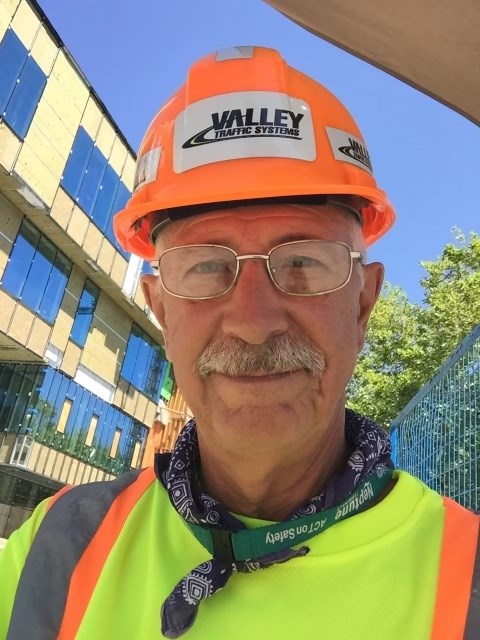RCMP handed out 40 tickets in two hours at a traffic enforcement blitz this week in Metro Vancouver – including 28 for illegal use of cellphones.
“Drivers hold the lives of vulnerable roadside workers in their hands,” says Trace Acres, program director for Road Safety at Work. “The workers depend on our driving decisions for their safety. They need us to put away our phones and pay attention in work zones.”
Road Safety at Work and the Work Zone Safety Alliance coordinated the event. BC Highway Patrol — RCMP monitored traffic around a work zone in Surrey set up by TELUS. In addition to the tickets for illegal cellphone use, they also ticketed eight drivers for seatbelt violations and four more for speeding.
A vehicle driving through a work zone is one of the greatest risks for the tens of thousands of people who work on or along roadways across B.C., says Acres.
“Distracted drivers put themselves, their passengers, and workers at risk of injury or death,” he said.
The traffic blitz is part of Road Safety at Work’s Cone Zone awareness campaign. It encourages drivers to consider the impact of their driving habits in work zones, which run year-round in B.C.
Between 2014 and 2023 in B.C., nine roadside workers were killed and 251 were injured seriously enough to miss time from work, according to WorkSafeBC statistics.
Many people in B.C. work at the roadside. It’s not just construction and maintenance crews. Landscapers, tow operators, utility crews, recycling and garbage collectors, first responders, and many other workers all spend varying amounts of time in and around traffic too.
One of them is Kane Brisseau, a Langley resident who helps manage traffic at work zones around the Lower Mainland. Every time he heads to his job as a traffic control person, he says he hears the voices of his grandchildren.
“They know it’s dangerous work. Whenever I talk to them, the last thing they say to me is to be safe at work,” says Brisseau. “I just want to keep us all safe. And then go home.”
Brisseau became a traffic control person with The Universal Group more than four years ago, after he retired from a previous career. Safety for everyone in roadside work zones is his priority as he helps keep traffic flowing.
“Occasionally it feels dangerous. I feel the hair rising on the back of my neck,” Brisseau says. “I’ll be working and a car will suddenly come speeding over the crest of a hill. It really makes you jump.”
Watch for flashing lights, AFADs
Many vehicles in roadside work zones use flashing amber lights — a safety measure that many drivers don’t understand the legal significance of, according to a survey this year by Road Safety at Work. Nearly a third of people who drive for work didn’t know that B.C.’s Slow Down, Move Over law applies when amber lights are flashing.
“Whenever you see a vehicle with flashing red, white, blue, or amber lights, you need to reduce your speed and give workers as much room as you can safely provide,” explains Acres.
Bright orange cones are also a familiar sight at roadside work zones. Automated flagger assistance devices (AFADs) are becoming more common too. The remotely operated devices have red and yellow traffic lights and an arm with a fluorescent orange or red flag.
Drivers need to stop at least one car length away when the arm is down and the light is either solid yellow or red. Proceed only on flashing yellow when the arm is fully raised.
The typical fines in B.C. for work zone violations include:
Disobeying a traffic control device: $121
Failing to follow the Slow Down, Move Over law: $173 and 3 points
Speeding: $196 and up
Using an electronic device while driving: $368
“Changing our mindset and driving behaviour in work zones doesn’t take any special effort or any additional time,” says Acres. “And in return, we can help save lives. Everyone deserves to get home safe and healthy at the end of their workday.”



